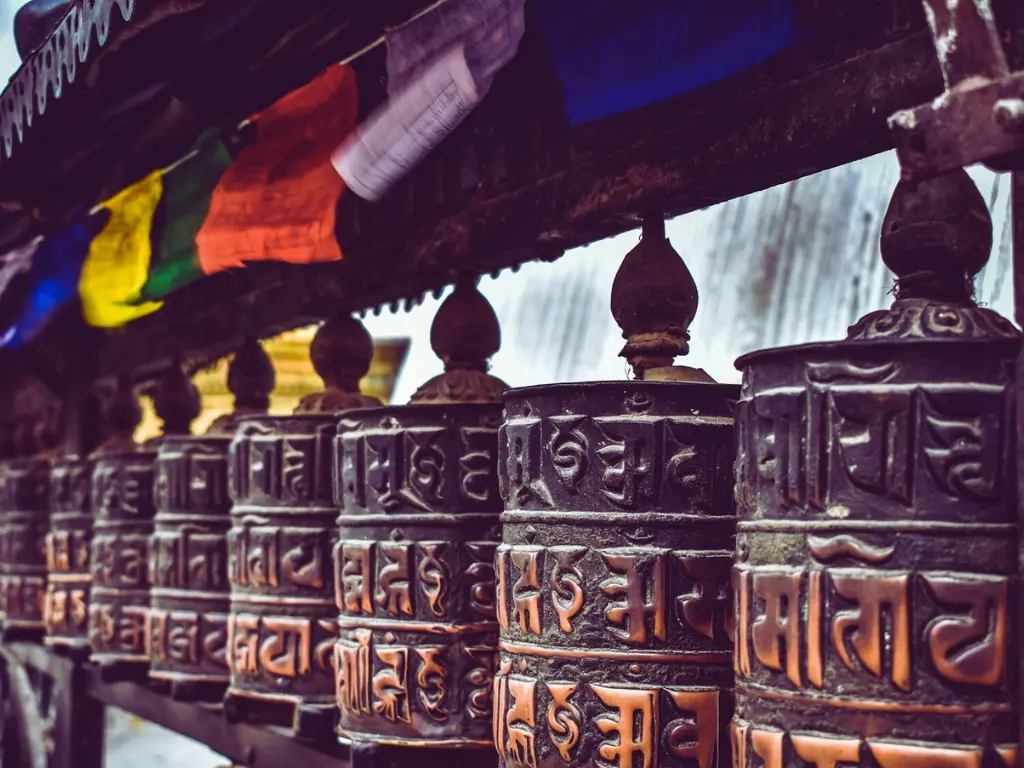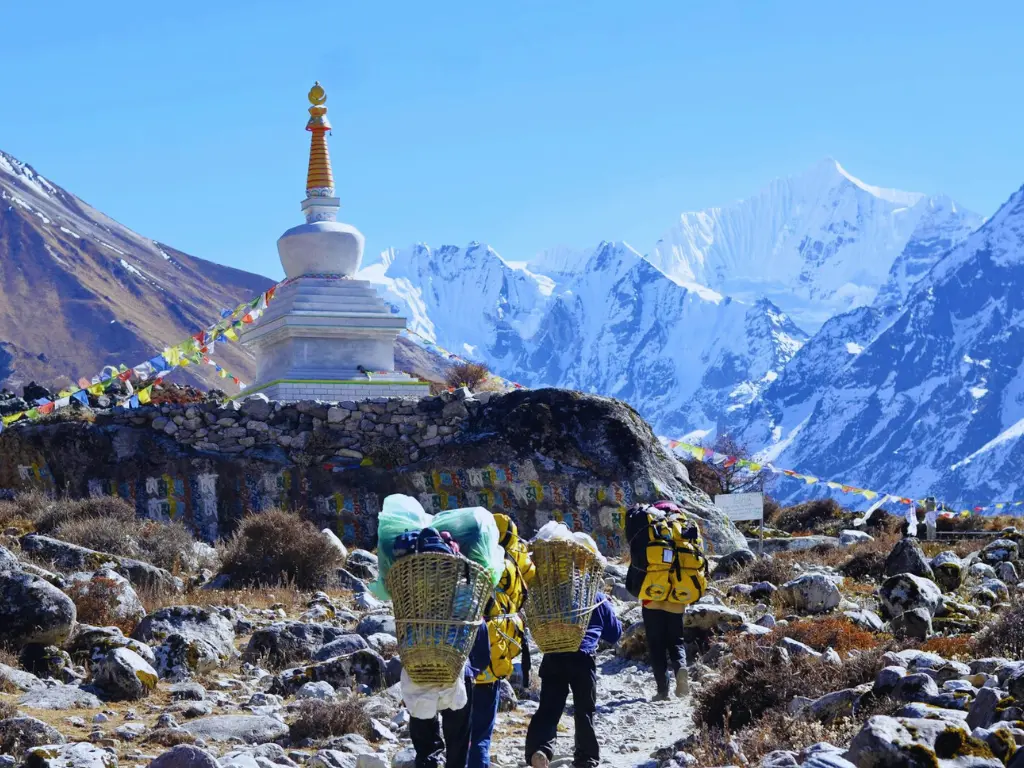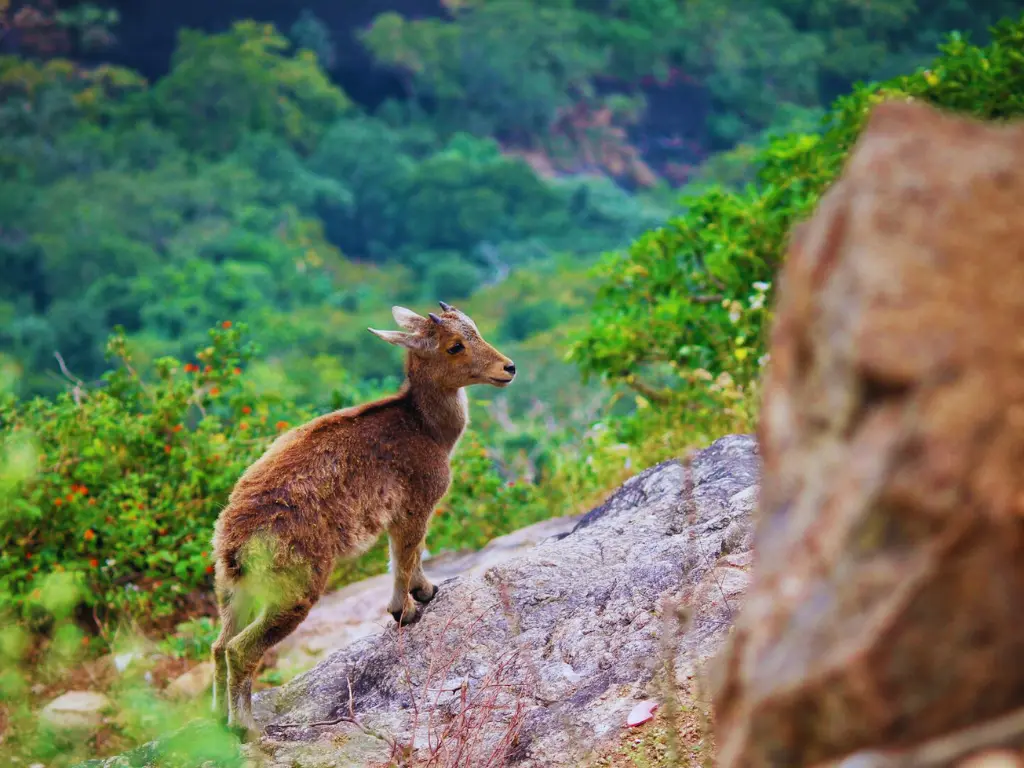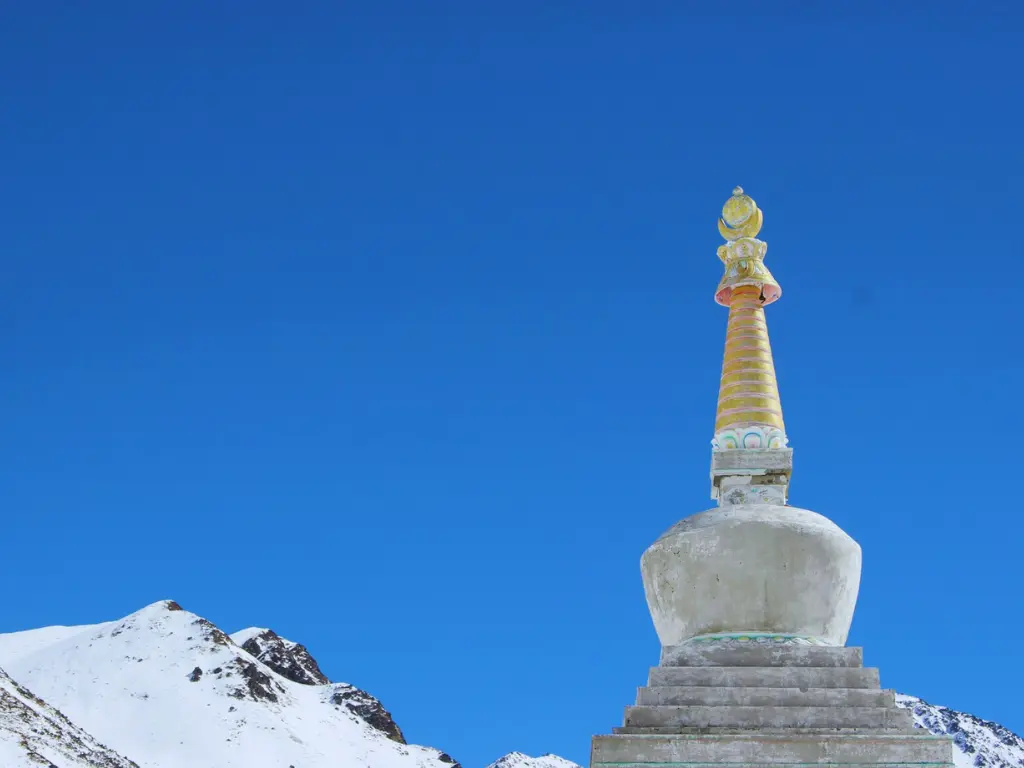Responsible Trekking in Nepal - Guidelines and Importance
Nepal, home to the majestic Himalayas and diverse cultural landscapes offers varied trekking trails in the Himalayas and an unforgettable experience to the adventurer enthusiasts. However, the increasing footsteps on these trails demand a mindful approach to preserve the region's natural beauty and cultural heritage. The beauty of these trails comes with a responsibility to preserve and protect them.
It should always be the first responsibility as travelers or trekkers to ensure your joy and experience do not come at the cost of environmental degradation of any kind. That being the priority, responsible trekking suggests trekkers focus on preventing any cultural and environmental damage and try not to bring in bad influences of any kind on the trek.
The importance of Responsible trekking includes sustainable tourism, respecting local culture and tradition, conserving wildlife, minimizing environmental impact, awareness of climate change, and supporting local economies.
Let’s explore how you can engage in responsible trekking in Nepal, ensuring your adventure is both enjoyable and sustainable.
What is Responsible Trekking?
Responsible trekking is about making conscious choices that minimize the negative environmental and social impacts of trekking while also contributing to enhancing the well-being of local communities.
You might wonder, why bother with responsible trekking? Well, it’s simple. Nepal's stunning landscapes and rich cultural heritage are vulnerable to over-tourism and environmental degradation. By trekking responsibly, you help preserve these treasures. Plus, it creates a more authentic and rewarding experience for you and your fellow trekkers.
Guidelines For Responsible Trekking in Nepal?
The following are recommendations and guidelines that will help you explore the trails of Nepal as a responsible trekker:
Respect Local Cultures and Traditions

Nepal is rich in diverse cultures, each with its unique customs and traditions. From the Sherpas in the Everest region to the Thakali in the Annapurna area, respecting these cultures enriches your trekking experience and fosters mutual respect.
Learn a few basic phrases in Nepali or the local dialect, such as "Namaste" for greeting, and understand the importance of customs, such as removing your shoes before entering a home or monastery.
Dress modestly, especially in rural areas, and always ask for permission before taking photographs of people or religious sites. These small gestures of respect can lead to more meaningful interactions and a deeper understanding of the local way of life.
Minimize Waste and Maintain Hygiene
Waste management is a significant challenge in remote trekking areas where infrastructure is limited and hard to manage. To minimize your environmental impact, adopt a "pack in, pack out" mentality.
Bring reusable items such as water bottles, food containers, and shopping bags to reduce single-use plastics. Opt for biodegradable toiletries and minimize packaging waste by buying in bulk and repackaging into reusable containers.
The majority of the trekking population ignores waste management due to which popular trekking spots are populated and you can see waste like water bottles, and plastics throughout the trekking trail.
Carry a small trash bag with you to collect any litter you generate and dispose of it properly when you return to larger towns with waste management facilities. By being mindful of your waste, you help keep the trekking routes pristine for everyone.
Stay on Marked Trails
Sticking to marked trails is essential for several reasons. Firstly, it helps prevent erosion and protects fragile ecosystems from damage. The delicate flora and fauna of the Himalayas can be easily disturbed by off-trail walking. Secondly, staying on designated paths ensures your safety, as these routes are regularly maintained and monitored for hazards.
Walking off-trail can lead to getting lost or encountering unsafe terrain. Additionally, designated trails often pass through areas where local communities are accustomed to trekkers, reducing the impact on private lands and sacred sites.
Conserve Water and Energy Resources
Water and energy are precious commodities in high-altitude and remote areas. Use water sparingly by taking short showers, turning off taps tightly, and using biodegradable soap.
In teahouses and lodges, electricity is often generated through solar panels or limited resources. Minimize your energy consumption by using solar-powered devices and turning off lights and electronics when not in use. Bring a portable solar charger for your gadgets to reduce your reliance on local energy sources. By conserving these resources, you help ensure their availability for both locals and other trekkers.
Choose a Good Trekking Agency
Selecting a reputable trekking agency in Nepal is crucial for a responsible trekking experience. Look for agencies that prioritize sustainable practices, provide fair wages to their staff, and are committed to preserving the environment.
Reputable agencies often hold certifications from organizations such as the Trekking Agencies’ Association of Nepal (TAAN) or the International Porter Protection Group (IPPG). These certifications indicate a commitment to ethical practices and high standards of service. A good agency not only enhances your trek but also ensures that local communities benefit from tourism through fair wages and employment opportunities.
Be Mindful of Porter Rights and Support Local Economies

Porters play a vital role in the trekking industry, carrying heavy loads to ensure your comfort and safety. Ensure they are treated fairly by verifying that your trekking company adheres to ethical guidelines, including fair wages, proper gear, and reasonable weight limits.
Supporting local economies extends beyond hiring local guides and porters. Stay in locally-owned lodges, buy from local vendors, and choose locally-produced goods. This approach ensures that the economic benefits of tourism are distributed within the community, contributing to its development and well-being.
Support Locally Made Products
Buying local products supports the community economically and allows you to take a piece of Nepal's rich culture home with you. Choose locally-made crafts, foods, and souvenirs, which often have a lower environmental footprint compared to imported goods.
Handwoven textiles, traditional pottery, and local honey are examples of products that not only make unique souvenirs but also support local artisans and farmers. By supporting local products, you contribute to the sustainability of the community's traditional crafts and livelihoods.
Carry Light Backpack
A lighter backpack reduces the physical strain on you and the porters. Pack only essentials, focusing on multi-purpose items. For instance, a lightweight, quick-drying towel can be used for various purposes, and versatile clothing layers can be mixed and matched. Be a minimalist while packing for trekking in Nepal.
Check out the comprehensive packing list for trekking in Nepal.
This approach not only makes your trek more enjoyable but also aligns with the principles of responsible trekking by reducing the burden on porters and minimizing your environmental footprint.
Be Prepared and Educated
Education is a powerful tool for responsible trekking must trekkers tend to ignore. Before embarking on your trekking adventure, research and educate yourself about the local environment, culture, and trek route regulations.
Study the flora and fauna you may encounter, understand the challenges of high-altitude trekking, and familiarize yourself with Leave No Trace principles. Being well-prepared helps you make informed decisions that benefit both you and the communities you visit. Additionally, taking a basic first aid course can be invaluable in remote areas where medical facilities are limited.
Follow Rules and Regulations Properly
Following rules and regulations properly when engaging in trekking activities helps ensure the trekker's safety.
When trekking to restricted trekking areas it is important to stay within the designated trail and carefully follow the instructions of the guides. They are restricted areas for a reason and you must follow the guidelines of the trek route.
While camping trekkers should practice caution and avoid settling in areas that are not approved for such purposes. Coordinate with the locals and authorities for permission and make sure it is safe to stay.
Compliance with these regulations helps preserve the integrity of the trekking experience.
Why is Responsible Trekking Important in Nepal?
Trekking is a fun way to explore the world’s natural beauty and different cultures. However, as more people hit the trails, it’s important to trek responsibly. Let’s talk about why responsible trekking is important and how you can make your journey enjoyable and sustainable.
Sustainable Tourism
Responsible trekking is a key part of sustainable tourism. This means reducing environmental impact and helping local communities. By choosing eco-friendly practices, trekkers can help keep nature beautiful.
For example, use reusable water bottles instead of single-use plastics. This ensures these amazing trails will be there for future generations to enjoy.
Wildlife Conservation

A big part of responsible trekking is protecting wildlife and wilderness. The wilderness is home to diverse wildlife. Trekking routes often go through the habitats of different animals. By staying on marked trails and being quiet, trekkers can avoid disturbing wildlife.
Avoiding litter and using biodegradable products helps protect these delicate ecosystems. Your small careful actions help preserve the animals and plants that make trekking destinations special.
Promotes Deep Travel
Deep travel means connecting with the places you visit. Responsible trekking encourages this by getting trekkers to engage with local cultures and environments. Instead of rushing through, take time to learn about the history, traditions, and natural features of the area.
Talk to local people, visit museums, and read about the area before you go. This approach makes your experience richer and helps you appreciate the places you visit more.
Protects Local Culture and Heritage

One of the best parts of trekking is meeting different cultures. However, it’s important to approach these interactions with respect. Learning a few words in the local language, understanding cultural norms, and dressing properly are small steps that show you value and respect the people you meet. This fosters positive relationships and deeper cultural understanding. By being a respectful guest, you can make your travels more meaningful and build lasting memories.
Trekking often takes you through areas rich in cultural heritage. You will pass through several monasteries and stupas with prayer flags flattering throughout the trail. These are very sacred and hold significant value for the local people. Respecting local customs and traditions is important. Learn a few words in the local language, dress modestly, and ask for permission before taking photos. Protecting cultural heritage helps local communities feel valued and ensures their traditions are preserved for future visitors. When locals see that you respect their culture, it builds trust and friendship.
Minimizing Environmental Impact and Conserving the Environment
Responsible trekking means minimizing your environmental footprint. Carry reusable items like water bottles and food containers to reduce plastic waste. Properly dispose of any trash you create and avoid single-use plastics.
Staying on marked trails helps prevent soil erosion and protects fragile plant life. By being mindful of your actions, you help conserve the natural beauty of trekking destinations. Simple actions like using a refillable water bottle and carrying your trash out can make a big difference.
Awareness on Climate Change
Climate change is a big issue in today's world. In a country like Nepal, trekking shows you the impacts of climate change up close. White snowy peaks melting and Glaciers shrinking, weather patterns changing, and differences in plants and animals are clear on many trails. Responsible trekking includes being aware of these changes and taking steps to reduce your carbon footprint.
Use energy-efficient gear, support eco-friendly lodges, and consider carbon offset programs to balance your travel emissions. By understanding and addressing climate change, you can help protect the places you love to trek.
Supporting Local Economies

Responsible trekking also means helping local economies. Hiring local guides and porters, staying in locally-owned lodges, and buying goods from local vendors ensure that tourism benefits the community. This support can lead to better infrastructure, education, and healthcare in these areas, creating a positive cycle of growth and development. When you spend money in the local community, you help create jobs and support families.
Practical Tips for Responsible Trekking in Nepal
Plan and Prepare
Before setting off, choose a trekking company that is committed to environmental sustainability and ethical practices. Investigate their policies on waste management and support for local communities. Pack thoughtfully, aiming to minimize waste by bringing reusable gear such as water bottles, utensils, and bags. Prepare for changing weather conditions with appropriate clothing to avoid the need for unnecessary purchases along the way, which can contribute to waste.
Follow Leave No Trace Principles
Embrace Leave No Trace (LNT) principles to minimize your environmental footprint. Ensure that all waste, including biodegradable items, is packed out. This means carrying out all food wrappers, personal hygiene products, and even organic waste like fruit peels. Stick to established trails to prevent trail widening and erosion, which can lead to soil degradation and habitat loss. By avoiding shortcuts and minimizing your impact on the environment, you help preserve the beauty and integrity of the trekking routes.
Respect Local Cultures
Engaging with local communities respectfully is crucial. Learn about local customs and traditions before your trek, and be mindful of cultural sensitivities. Dress modestly and appropriately, especially in rural and religious areas, to show respect for local norms. Always ask for permission before taking photos of people or sacred sites, and try to engage with locals in a manner that honors their traditions and way of life. Your respectful behavior fosters positive relationships and helps preserve cultural heritage.
Support Sustainable Tourism
Choose eco-friendly accommodations that implement practices like energy conservation, water management, and waste reduction. By staying in lodges or camps that prioritize sustainability, you contribute to reducing the environmental impact of tourism. Support local businesses by buying handicrafts, food, and services from community-run enterprises. This not only helps the local economy but also ensures that your spending benefits the people who live in and around the trekking areas.
Contribute to Conservation Efforts
Get involved in or contribute to local conservation projects that aim to protect Nepal’s natural landscapes and wildlife. Many organizations run clean-up drives, tree-planting initiatives, and wildlife protection programs. Your participation or donations can significantly aid these efforts and enhance the sustainability of trekking tourism. By supporting these initiatives, you help address issues like littering, deforestation, and habitat loss, ensuring that Nepal’s natural beauty is preserved for future generations.
Educate Yourself and Others
Stay informed about the environmental and cultural impact of trekking in Nepal. Share your knowledge with fellow trekkers and encourage them to adopt responsible practices. By spreading awareness, you contribute to a collective effort that promotes sustainable tourism and conservation. Educating yourself and others can amplify the impact of responsible trekking, fostering a culture of respect and environmental stewardship among trekkers.
Conclusion
Engaging in responsible trekking in Nepal is more than a trend—it's a necessity. By respecting local cultures, minimizing waste, staying on designated trails, conserving resources, and supporting local economies, you contribute to a sustainable future for Nepal’s trekking routes.
Trekking responsibly ensures that the breathtaking landscapes and rich cultural heritage of the Himalayas are preserved for generations to come. Focus on embarking on an adventure that leaves only positive footprints.
